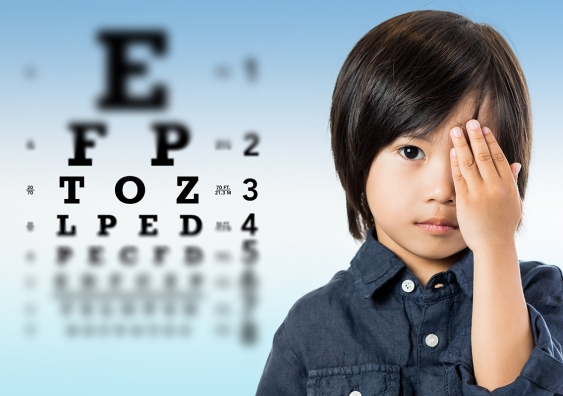
Myopia, or nearsightedness, is a condition in which objects up close appear clear, however objects in the distance are blurry. Myopia usually first occurs in school-aged children and can progress through childhood and adolescence until about age 20. Myopia increases the risk of sight-threatening conditions including myopic macular degeneration, glaucoma, retinal holes and tears, and retinal detachment. Higher levels of myopia can significantly increase this risk.
Studies show early intervention will have the biggest impact on reducing myopia progression. A customized myopia management plan can substantially help slow progression, reducing the risk for associated eye diseases. The following are available treatments used for myopia management.
ORTHOKERATOLOGY (corneal reshaping)
Orthokeratology (ortho-k) refers to the use of specially designed gas-permeable therapeutic contact lenses that will gently and non-surgically reshape the cornea overnight (while sleeping) to provide acceptable unaided distance vision during waking hours. This design has been around for over 20 years now and although it was originally designed as an alternative correction to glasses, it has gained popularity in more recent years for myopia management.
MULTIFOCAL CONTACT LENSES
Multifocal contact lenses are routinely fit for patients who are 40 years of age or older to assist in providing clear vision at both distance and near without the assistance of reading glasses. However, for children wearing multifocal contact lenses the lenses create a myopic defocus in the peripheral retina (light focused in front of the retina instead of directly on the retina). This defocus has been shown to slow down the progression of myopia. Multifocal lenses may cause mild distance blur compared to a single vision contact lenses.
MiSight 1 DAY CONTACT LENSES (FDA approved)
MiSight 1 day is a daily disposable soft contact lens that was launched in 2020. It is the first contact lens that is FDA approved to slow progression of myopia in children between ages 8 and 12 years old at the initiation of treatment. MiSight contact lenses is a single use lens that is discarded at the end of each day and is not intended for overnight wear. Like multifocal contact lenses, MiSight uses dual-focus technology to help create a defocus in the peripheral retina.
ATROPINE
Atropine is a pharmaceutical eye drop typically used for pupil dilation, and occasionally used to treat amblyopia (lazy eye). For myopia control, a low-dose of atropine is prescribed. The drops are used once a day in each eye every day. While the side effects of low-dose atropine are minimal, blurred near vision and/or photophobia (light sensitivity) may be experienced. With this therapy, the most updated correction (spectacle wear or contact lenses) must still be worn during treatment.
Please note that your child may not be a candidate for some of these treatment options. Contact our office today at 808-737-5811 for a consultation.